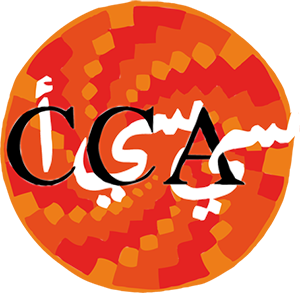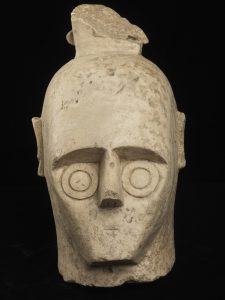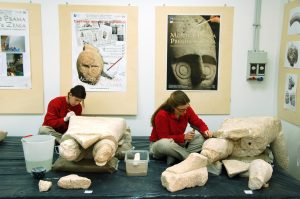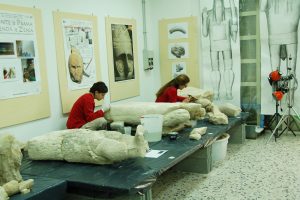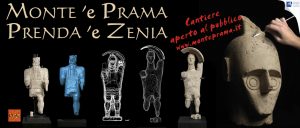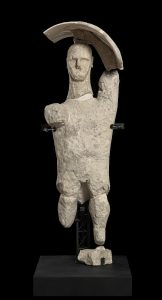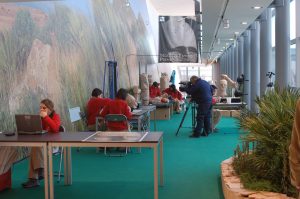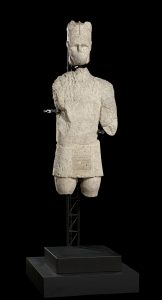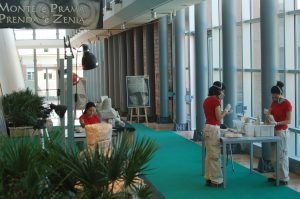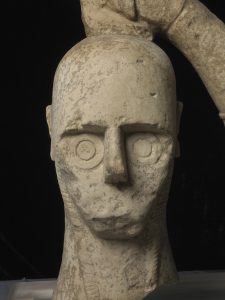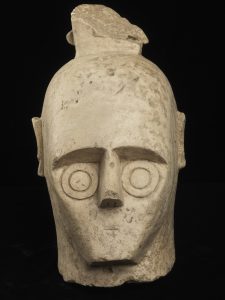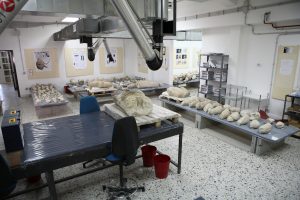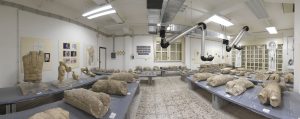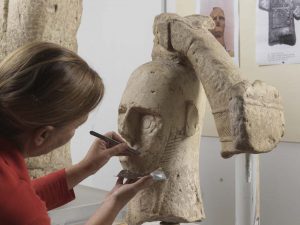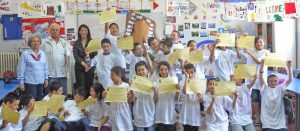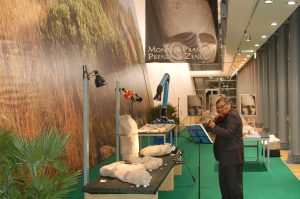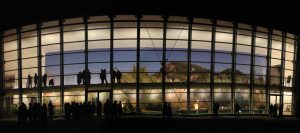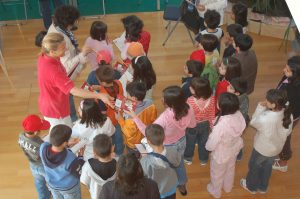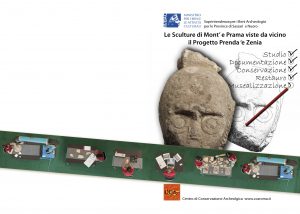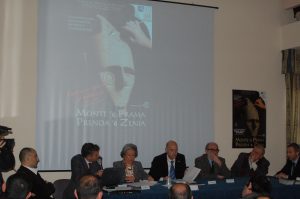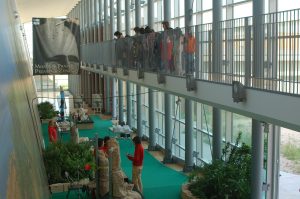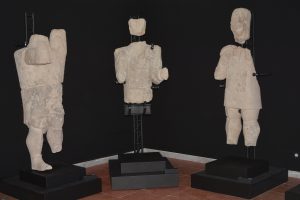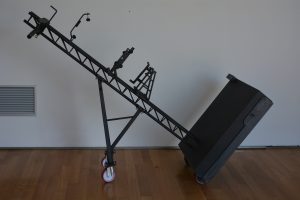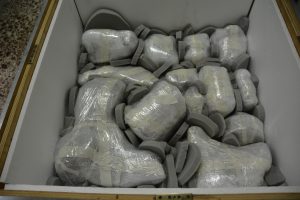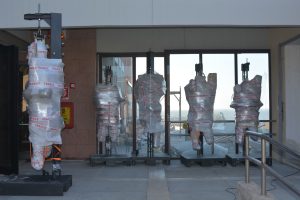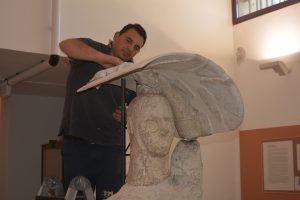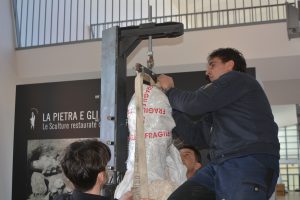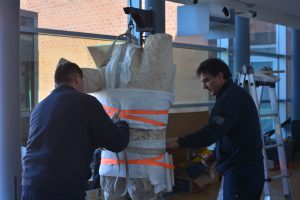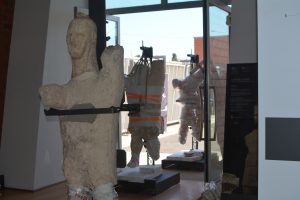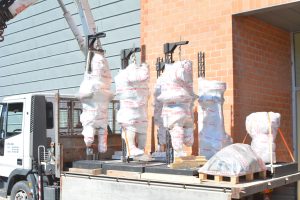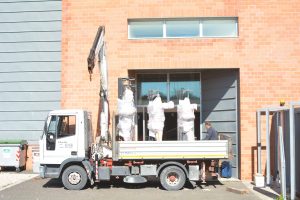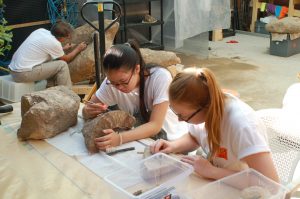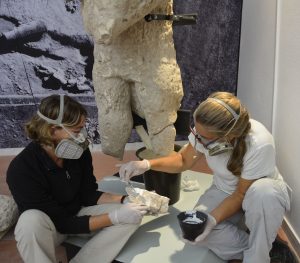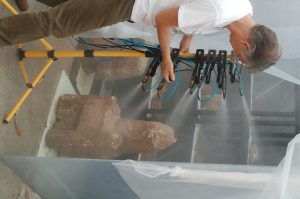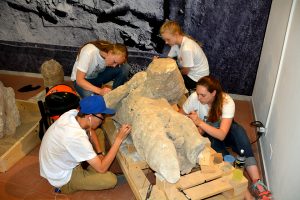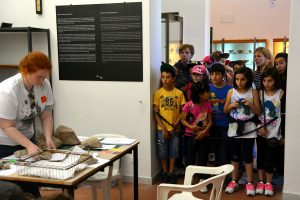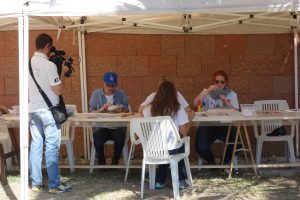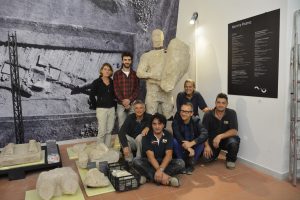Introduction
The cultural project “Monte ‘e Prama Prenda ‘e Zenia” involves the documentation, conservation, restoration and museum display of the statues found in 1974 at Monte Prama in the province of Oristano, Sardinia.
This is an extraordinary group of stone fragments from the nuragic period depicting archers, warriors, boxers and models of nuraghe. There are two hypotheses about their age: one theory dates the statues to around the 6th century BC; the other goes farther back to the 1st millennium BC.
A digital archive of the fragments was created, analyses of the original materials were performed and the conservation treatment, undertaken by CCA, was carried out in the spaces of the Centro di Conservazione e Restauro of Sassari, set up for this purpose.
The project has involved the initial setting up of the conservation laboratories, other than of a system for the water mist cleaning. This phase was followed by the difficult task of joining the pieces, to fit together a puzzle of ten tons of material.
Within the context of the project, CCA designed a dedicated website
http://www.monteprama.it/ with information and updates on the treatment and the statues, in three languages, Italian, English and Sardinian.
Furthermore, as part of the Educational Program, the worksite was open to the public with guided tours, installation of a panorama showing the original context of the statues, distribution of didactic material, a school drawing competition and a final exhibition.
The project “Nuragic Sculptures of Monte Prama in Sardinia” was awarded the EU Prize for Cultural Heritage / Europa Nostra Awards in the category “conservation”. During the awarding ceremony, held at the Oslo Town Hall on the 11th of June 2015, the project also received the Public Choice Award, the most prestigious among all, awarded by HRH Haakon Crown Prince of Norway to Roberto Nardi.
In May 2015, CCA started a restoration and conservation project at the Museo Civico “Giovanni Marongiu” of Cabras (OR), for the new finds excavated at Mont’e Prama in 2014. The project led to the final museum display, on support, of a complete sculpture belonging to a typology of boxer previously unknown.
